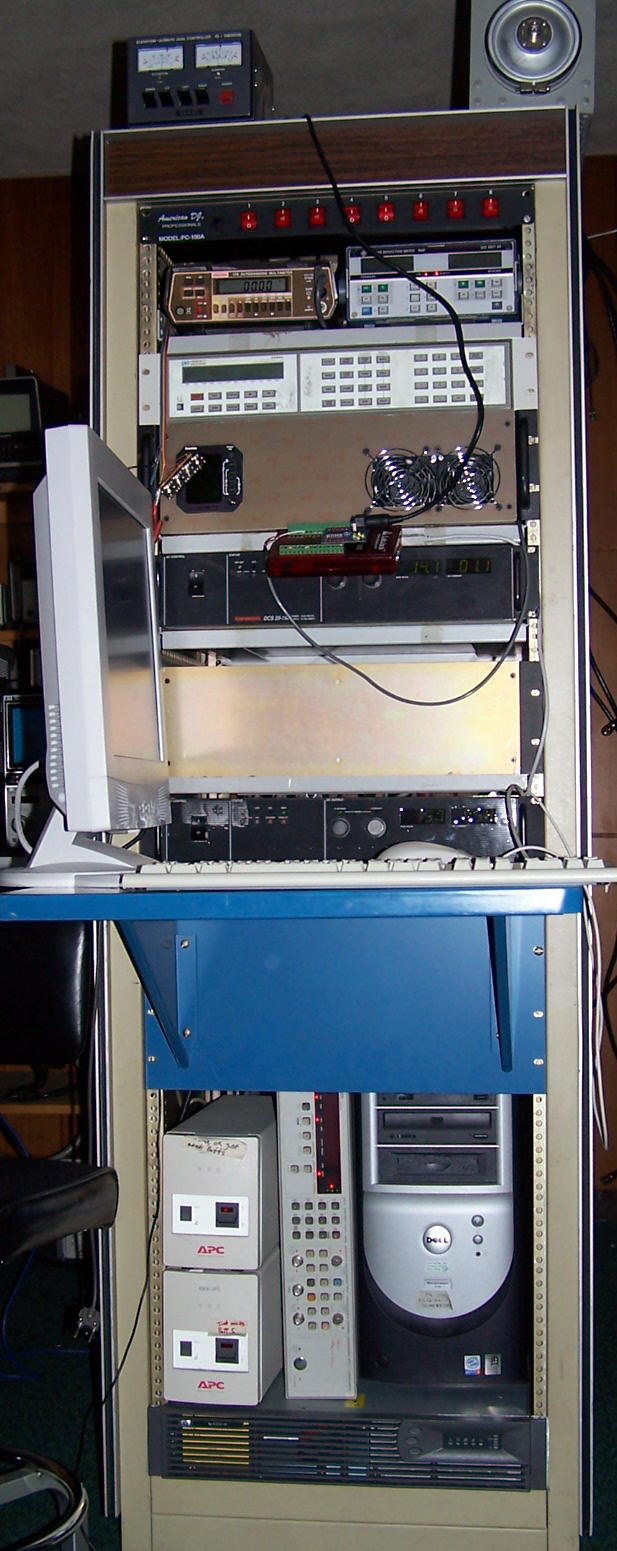After over a year off the air, the SETI-League sponsored moonbounce beacon,
W2ETI, has returned to the air. Taking advantage of years of experience
running its previous hardware incarnation, many improvements have been made.
Initially, the improvements should be noticeable only as improved "uptime" and a
few dB more signal. A number of additional upgrades are planned as
well, which will result in a much stronger signal - 9dB - and the ability
to transmit with a number of modulation formats, including JT65, SSB, and
arbitrary I/Q modulation under computer control.
 |
On top of the rack (left) is the Yaesu 5600 antenna rotator.
To its right is a 1kW 40dB attenuator used as a "dummy load" when
testing the system. The topmost item in the rack is a power
distribution panel for all units that are not connected directly to the
UPS.
Immediately below that on the left is an IEEE-488 capable Keithley
digital voltmeter, used to independently measure the power supply
voltages and other parameters that aren't directly metered over the GBIB.
To its right is an Rohde & Schwarz NAP meter for forward and
reflected power. The sensor head is permanently enclosed in the
exciter/amplifier assembly. |
| Next down, under the separator shelf, is an HP 3488A switch box that
selects voltages and signals to be monitored and measured.
Under the switch box is the heart of the beacon, the
exciter and
amplifier assembly, which also includes the frequency reference and
synthesizer. In the previous beacon, this was a sprawling system;
it has been compacted into a 3U unit and neatened up quite a bit.
Hanging in front by some cables is a "Labjack" data acquisition unit,
which also has outputs to drive the antenna rotator.
|
| Under the next separator shelf is one of the 20V, 150A power
supplies. Because the amplifier requires 28VDC, two are connected
in series (two shelves down). This amplifier requires about half
the current of the old one, so the supplies are loafing, and, in fact,
can easily power a second amp. And may! |
| Under the next shelf is the reference frequency standard. This
actually combines a Rb atomic standard, a GPS-disciplined oscillator,
and a quartz oscillator to tell which is correct if the two disagree! |
| Next separator, another 20V, 150A power supply. |
| Below the montor/keyboard shelf, left-to right, are two
115VAC UPS
units, an HP 5334B frequency counter, and a Dell PC with GPIB card that
controls all the hardware. |
| At the very bottom is a great reliability enhancer, a
230V 3KW UPS
that provides full power for the amplifier. |